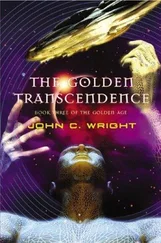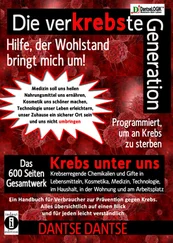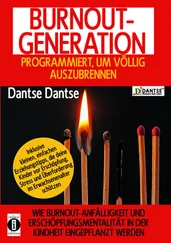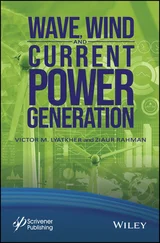In Fawcett’s opinion, his platoon commander doesn’t know how to properly call in a strike (a similar complaint men in Bravo Company have about their commander, Encino Man). Fawcett believes the best way to take out the building is to order one or two rounds of artillery, see where they land, and if they don’t hit the building, have the artillerymen adjust their fire. Instead, his commanding officer requests a “fire for effect” strike—four to six rounds of artillery shot all at once, then repeated without any adjustment. “It’s an officer thing,” Fawcett tells his men. “He just wants the glory of calling in a big strike. I can’t go over his head.”
Fawcett and his men watch at least sixteen HE rounds slam into the city and explode pretty much randomly in the streets. When the smoke clears, the only damage to the intended target is that a corner of the building has been clipped off. Fawcett turns to several of his buddies and asks, “Don’t you think if some foreign army came into a small American town and did what we’re doing here, you wouldn’t find some American good old boys eager to string one of them up if they fell into their hands?”
AFEW HOURS BEFORE SUNSET, the Marines are ordered to assault the town. The infantrymen from Third Battalion lead the way in, advancing under heavy machine-gun fire, blowing up buildings in their path with shoulder-fired missiles. They seize several military structures and clear the surrounding houses. Nearly all of the Iraqi soldiers have fled or changed out of their uniforms in order to blend in with the populace. They fire few shots. There’s no sign of Chemical Ali or the body of the missing Marine.
Fawcett’s platoon and another from Alpha drive their Humvees about 500 meters into the town, with Cobras launching Hellfire missiles ahead of them. They move into a water-purification plant, a complex of industrial structures filled with trucks and machinery. The men are ordered to stay here for the night.
By sundown, any thought that this could be a revenge mission completely disappears. Dozens of Iraqi citizens approach Alpha’s hungry Marines on the perimeter, bearing gifts of tea, bowls of rice and flat bread, which Marines refer to as “Hajji tortillas.” Some townspeople, speaking broken English, are eager to point out enemy positions. A few invite the Marines to come into their homes for a proper meal. Patterson is now forced to order his Marines, who hours before had been fantasizing about killing everyone in the town, to stop eating food brought to them by the locals.
After dark Patterson gets the clearest confirmation yet that the Baath Party and Iraqi military forces have abandoned the town. Through his NVGs he observes hundreds of people streaming in and out of government buildings “like ants, carting off everything they can carry—desks, chairs, mattresses.”
Iraqis aren’t the only ones looting. Inside the water-purification plant Fawcett watches fellow Marines “rape the buildings—smashing things up, pissing everywhere, hunting for souvenirs.” The water-purification plant must have been some sort of exemplary public-works project. Much of the equipment is new. Many of the trucks parked inside the buildings haven’t even been driven; they still have plastic on the seats. Marines use Ka-Bar knives to rip apart their interiors for material to reupholster their Humvees and trucks.
After their exciting night at the water plant, the Marines leave Ash Shatrah early in the morning. Locals cheer. To one of Patterson’s officers, “the change in the town was dramatic, like someone pulled a thumb off their backs. We liberated them.”
While the CIA mission failed, the liberation of Ash Shatrah proves to be precedent-setting in another sense. The Marines pull out of the town, leaving behind little or no civil authority, hordes of looters roaming through blown-up, trashed buildings and a scattered army of Baathists, soldiers and other loyalists, many of them still armed and all of them completely unaccounted for. The type of liberation seen at Ash Shatrah will play itself out again and again in other towns across Iraq until the U.S. military reaches Baghdad, where it will do pretty much the same, resulting in a much grander scale of anarchy.
Fawcett’s men don’t hear any word about the missing Marine until they’ve pulled out of the town. They are told that an old man in Ash Shatrah met with officers in the infantry battalion and informed them that the body of the lost Marine had been dragged through the streets and strung up, but was cut down and buried by “good Samaritans.” According to the story passed among Marines, the old man claimed that the good Samaritans did their best to give the Marine a Christian burial, then fled the city, fearing reprisals. After hearing this, Fawcett says, “All we’ve been looking for is a corpse. The Marine was gone before we got here.”
The body of this Marine is discovered a week later by other American forces. They find it buried in Ash Shatrah’s trash dump.
°
ON THE MORNING OF APRIL 1, the Marines of First Recon—less Alpha Company, not yet returned from its mission—greet the new day from their wet, muddy holes dug alongside the highway, north of Al Hayy. Few of the troops slept much the night before. After the fatal shooting of the little girl at Charlie Company’s roadblock, the Marines fired warning shots at several more vehicles, and also killed the occupant of one car, a heavyset man in a twenty-year-old Buick, which had failed to stop. Later the Marines came under attack from a BM-21, which saturated a nearby field with bombs, though no one was hit. The destruction continues after sunrise.
Below our position on the highway, slow-moving A-10 jets circle the fringes of Al Hayy, belching out machine-gun fire. The airframe of the A-10 is essentially built around a twenty-one-foot-long, seven-barreled Gattling gun—the largest such weapon in the U.S. arsenal. When it fires, it makes a ripping sound like someone is tearing the sky in half. The A-10s wrap up their performance by dropping four phosphorous bombs on the city. These are chemical-incendiary bombs that burst in the sky, sending long tendrils of white, sparkling flames onto targets below.
The air attacks are part of RCT-1’s advance into Al Hayy from the south. Now, in coordination with that effort, First Recon is ordered to move to a canal on the western side of the town and seal off another escape route.
Civilians line up by the side of the road when First Recon’s convoy assembles for its departure. The morning’s show of American airpower has whipped them into a frenzy. They greet the Marines like visiting celebrities. “Hello, my friend!” some of them shout. “I love you!” It doesn’t seem to matter that these young men have just witnessed portions of their city being destroyed. Or maybe this is the very appeal of the Marines. One of the promises made by the Bush administration before the war started was that the Iraqi populace would be pacified by a “shock and awe” air-bombing campaign. The strange thing is, these people appear to be entertained by it. “They think we’re cool,” says Person, “because we’re so good at blowing shit up.”
First Recon’s convoy pauses on the road by the bridge. Waving and jumping up and down, kids gathered by the tractor-trailer shot up the night before pay no heed to the corpses scattered not far from their feet. Farther on, there’s another shot-up car, with a male corpse next to it in the dirt. More kids dance around the carnage, giving thumbs-up to the Americans, shouting, “Bush! Bush! Bush!”
I walk up to Espera’s vehicle. He gazes out at the grinning, impoverished children with dirty feet and says, “How these people live makes me want to puke.”
Читать дальше












